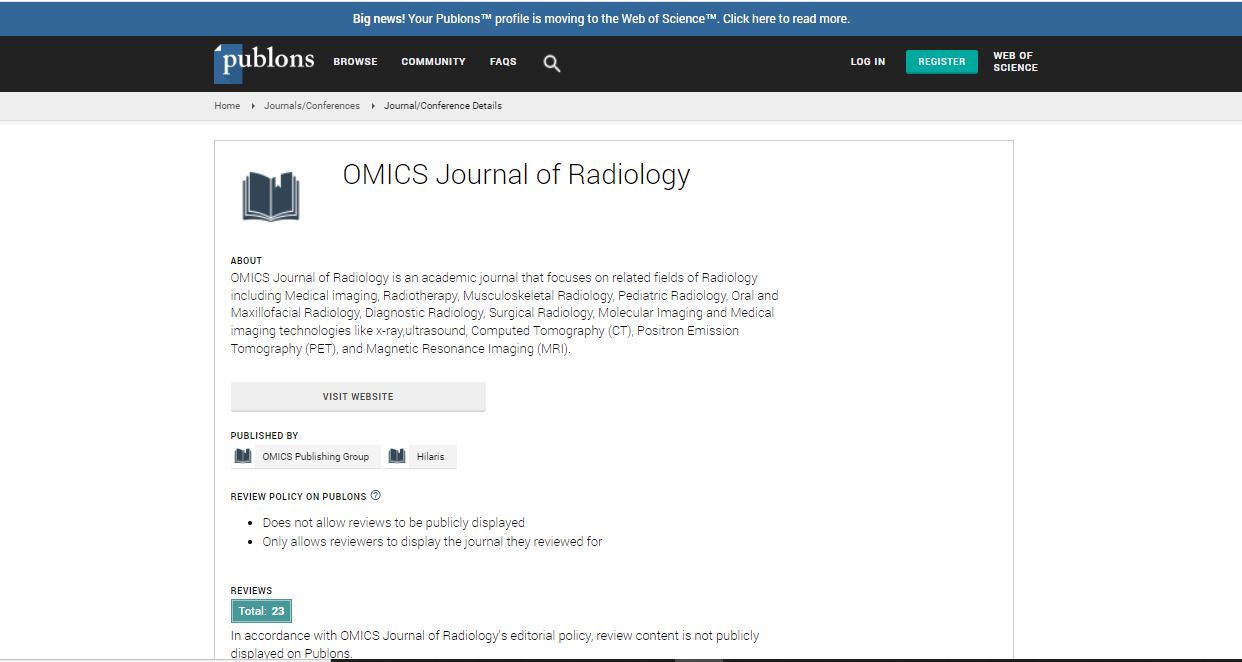Our Group organises 3000+ Global Conferenceseries Events every year across USA, Europe & Asia with support from 1000 more scientific Societies and Publishes 700+ Open Access Journals which contains over 50000 eminent personalities, reputed scientists as editorial board members.
Open Access Journals gaining more Readers and Citations
700 Journals and 15,000,000 Readers Each Journal is getting 25,000+ Readers
Google Scholar citation report
Citations : 551
Journal of Radiology received 551 citations as per Google Scholar report
Journal of Radiology peer review process verified at publons
Indexed In
- Index Copernicus
- Google Scholar
- Open J Gate
- Genamics JournalSeek
- ResearchBible
- Electronic Journals Library
- RefSeek
- Hamdard University
- EBSCO A-Z
- OCLC- WorldCat
- SWB online catalog
- Virtual Library of Biology (vifabio)
- Publons
- Geneva Foundation for Medical Education and Research
- ICMJE
Useful Links
Share This Page
Diagnostic value of contrast-enhanced ultrasound for the differentiation of breast lesions: A metaanalysis
3rd International Conference on Radiology and Imaging
Xuelei Ma1, Rongjun Liu1, Jing Zhang1, Jinna Chen2, Feng Yang2 and Hongyuan Jia1
1West China Hospital of Sichuan University, PR China 2Sichuan University, PR China
Posters-Accepted Abstracts: OMICS J Radiol
Abstract
The objective of this study was to systematically review and evaluate the diagnostic accuracy of contrast-enhanced ultrasound (CEUS) in differential diagnosis of benign and malignant breast lesions. The scientific literature databases PubMed and Embase were comprehensively searched for relevant studies before January 2015. Data were pooled to yield summary sensitivity, specificity, positive likelihood ratios (PLR), negative likelihood ratios (NLR), and diagnostic odds ratio (DOR) using Meta-Disc Version 1.4 software. A total of 31 studies with 2395 lesions were considering eligible following predefined criteria. The pooled sensitivity, specificity and DOR was 0.88 (95% CI, 0.86-0.90) and 0.80 (95% CI, 0.78-0.82), respectively. The pooled positive and negative likelihood radios was 4.18 (95% CI, 3.01-5.80), and 0.16 (95% CI, 0.11-0.24), respectively. The pooled DOR of was 30.36 (95% CI, 16.41-56.14) and the area under the curve (AUC) of SROC was 0.9136 (standard error: 0.0226). In the subgroup analysis, the pooled results of real time gray scale or harmonic modality with second generation contrast agents groups were significant better than other groups. All subgroup analysis did not diminish the heterogeneity due to variability in study factors. There was no significant publication bias according to Deeks√ʬ?¬? funnel plot asymmetry test. In conclusion, the comprehensive results suggested that CEUS could be a potential reliable method for differential diagnosis of benign and malignant breast lesions, the second generation contrast agents increase diagnostic accuracy of CEUS and real time gray scale and harmonic modality could be more suitable to perform CEUS.Biography
Email: drmaxuelei@gmail.com

 Spanish
Spanish  Chinese
Chinese  Russian
Russian  German
German  French
French  Japanese
Japanese  Portuguese
Portuguese  Hindi
Hindi 
